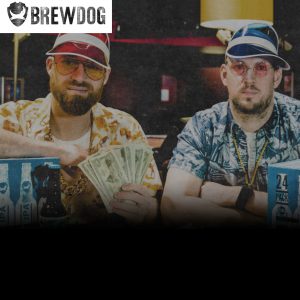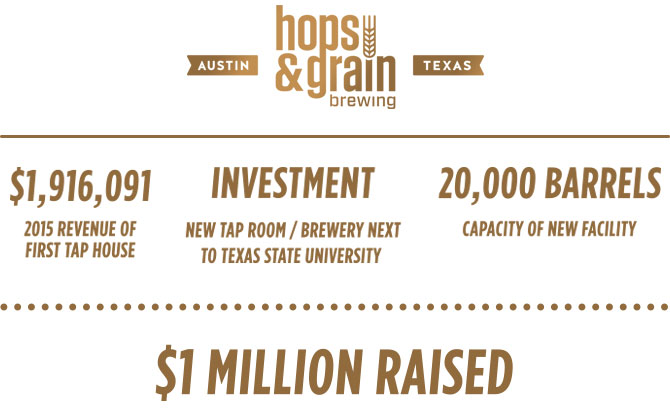
Until last year, crowdfunding in the beer industry meant that an upstart craft brewery could offer perks like pint glasses and T-shirts to consumers in exchange for thousands of dollars in donations. In 2013, those types of campaigns earned San Diego’s Modern Times Beer and Miami’s J. Wakefield Brewing more than $65,000 and $110,000, respectively.
Breweries are still using platforms such as Kickstarter and Indiegogo to raise capital, but the amount of money they could raise — and the types of investors who could help them raise it — changed significantly through the final ratification of Title III of the Jumpstart Our Business Startups (JOBS) Act, in May 2016.
Small businesses can now raise a maximum of $1 million annually from non-accredited investors through Securities and Exchange Commission-approved third-party crowdfunding portals such as WeFunder. Two breweries have already maxed out their campaigns.
In January, Hopster’s LLC — a Massachusetts-based brew-it-yourself pub — completed a $1 million round of funding via WeFunder.
But Hopster’s wasn’t the first brewery to hit the $1 million mark. In fact, Austin, Texas-based Hops & Grain Brewing, also via WeFunder, became the “first business in history to raise $1 million by way of regulation crowdfunding,” according to the brewery.
A third beer company, South Austin Brewery, which makes an Evel Knievel tribute beer, is also in the midst of a campaign that has secured more than $115,000 after launching the campaign just before Election Day.
All three of those companies are taking advantage of Title III JOBS Act regulations that allow businesses to offer equity in exchange for up to $1 million, but there are even larger sums that can be raised under the Act. Another section, regulation A+ Title IV, enables companies to raise up to $50 million from both accredited and non-accredited investors.

Scottish craft beer makers BrewDog, using Title IV, have secured $3 million of a proposed $50 million as part of its Equity for Punks crowdfunding campaign that is aimed at funding a new Columbus, Ohio, brewing facility.
The success of the majority of these early campaigns could provide a roadmap for others looking for another round of capital.
“Long-term, crowdfunding is going to revolutionize the way companies make money,” Chris Harvey, a Santa Monica, California-based attorney who specializes in working with entrepreneurs, told Brewbound.
However, the way that Title III is currently written limits both businesses and investors in how much money they could potentially raise and earn.
For starters, the costs are higher for businesses to raise money from non-accredited investors, while the rewards are smaller, Harvey said. Title III raises require more middlemen and more disclosures, and there’s more liability, he said.
Adding unsophisticated investors to a cap table also presents a risk, William J. Bernat, a partner at Nutter McClennen & Fish LLP, a Boston law firm, told Brewbound.
“There’s not only an immediate litigation risk, but down the road as you sell shares to more experienced investors, how will this be viewed by more advanced investors,” Bernat questioned. “It’s a great big unknown at this point.”

Because many Title III investors are unsophisticated when it comes to investing, their ability to take part in a capital raise is tied to their finances. Investors with less than $100,000 are eligible to invest $2,000 or 5 percent of their annual income; those with greater than $100,000 are able to invest up to 10 percent of their income or net worth.
“There’s not a whole lot of ‘oomph’ that they can put down,” Harvey said. “It’s not going to be life changing.”
Although non-accredited investors aren’t typically trained to read pitch decks and balance sheets, their investment risk could be mitigated by the ceiling placed on potential contributions.
“It’s not like you can put in your life savings,” Harvey said. “But for them, it’s a lot.”
And once the investment is made, the investor is likely stuck with the note for at least year — and potentially longer.
So, if the risks outpace the rewards, why invest? Many investors are backing a product or cause that they care about, Harvey said. Growth of the beer industry at a local level can create backing for the “home team.” Meanwhile, lots of money has already come into the craft space. Still, it’s “caveat emptor.” And the risks are obvious.
“How does an investor invest wisely in Title III?” Harvey said. “Get educated and speak to a qualified professional. Whether that’s an industry expert or a lawyer that handles Title III raises, the investor should be well informed at all times.”

Despite the risks, crowdfunding offered Hops & Grain founder Josh Hare the opportunity to raise $1 million toward a second brewery project in San Marcos, Texas, near Texas State University. Hare’s sustainable microbrewery had reached a crossroads, needing to expand its existing location or open a second facility.
The risk paid off for Hare, both from a financial and a marketing sense.
“Six hundred people backed our campaign,” Hare told Brewbound. “That’s 600 voices out there talking about your brand.”
Hare said the money will cover about a third of the project cost to put in a 20,000-barrel, wind-powered facility. The rest will be covered by Hops & Grain’s 40-person investor group — 10 of which are principals.
“They’re all equity holders, but non-voting equity holders,” Hare said.
It can be hard to anticipate a large return. Hare chose to do a debt-based round of funding in which his company promised to pay investors a two-times return based on a percentage of revenue over an unspecified period of time. Ninety percent of the investments in Hops & Grain’s campaign were between $3,000 and $5,000, Hare said.

Meanwhile, Hopster’s — as much a restaurant and bar as it is a brewery — raised money with plans on opening a second, 6,000 sq. ft. location in Boston’s Seaport District in the spring. For the company, crowdfunding offered speed that the traditional investment class did not.
According to founder Lee Cooper, Hopster’s had already raised $550,000 from accredited investors to put toward the project. But his goal was to raise $1.7 million to complete the Fort Point project, so he has turned to Title III.
“It’s hard for a company like Hopster’s to go to accredited investors and ask for money,” Cooper told Brewbound. “Unless you’re really well connected, the chances of raising that money is hard.”
Cooper’s offer to investors was an equity stake, which he likened to a “mini IPO.” The floor for non-accredited investors to get a piece of Hopsters was $500, Cooper said, adding that the pre-money valuation of the company was $4 million.
The plan is to open a Hopster’s in Philadelphia in 2018 and 16 stores in cities throughout the U.S. by 2022. If Hopster’s achieves those goals, Cooper said it may be time to sell.
“I know if we can get to 16 [stores], we can sell this company for a significant amount of money,” he said.
If Cooper’s plan to build more than a dozen brew-your-own pubs around the U.S. over the next five years sounds ambitious, that might explain the ceiling on non-accredited investors. For the folks with money to burn, consider this pitch from Park City, Utah’s Mine Shaft Brewing, which has already crowdfunded nearly $6 million and plans to sell its yet-to-be-built brewery in the same time period.

Mine Shaft Brewing hasn’t made a drop of beer or put a shovel in the ground, but the brewery-in-planning has already secured about $5.6 million of a stated $9.4 million goal through accredited investors in a series A round of venture capital funding through a pair of funding platforms, Crowdfunder and Equitynet. That followed $655,000 in seed round funding from private investors, all willing to gamble on a team that Nemeckay said has experience reaching back to the 1970s at breweries such as Boston Beer Co., Harpoon, Pabst Blue Ribbon, Old Style, Lone Star, Schlitz and more.
“We need to do this big or go home,” Mine Shaft managing member Tim Nemeckay told Brewbound. “Within 24 hours, we had our first investor.”
Several investors, some of whom have kicked in $100,000 or more, are members of a New York private equity firm, Nemeckay added. Listed among Mine Shaft’s top investors on CrowdFunder are Terry Polistina, board member at Spectrum Brands; Johnny Wu, managing director at Barclays Capital; Dan O’Bryon, CFO at International Materials; and Alan Wayne of CCMP Capital Global Private Equity.
The blueprint for Mine Shaft looks like this: Build a brewery with 60,000 barrels of capacity from the onset and become a nationally recognized top 50 craft brewery in less than five years. Phase two would include growing to 150,000 barrels of capacity and selling to either a large craft player such as Duvel Moortgat or a major beer company like Anheuser-Busch, Molson Coors or Constellation Brands.
Nemeckay envisions Mine Shaft’s growth mirroring that of High West Distillery, which sold to Constellation Brands for $160 million last October. If this mindset sounds like Mine Shaft is getting ahead of itself, Nemeckay insisted that it isn’t. In fact, he’s surprised more breweries don’t have “a clearly devised exit strategy.”
“We want to be out in five years or less,” Nemeckay told Brewbound. “Who knows if we make it to phase two before we’re acquired. We could be acquired for the right number before phase two.”
